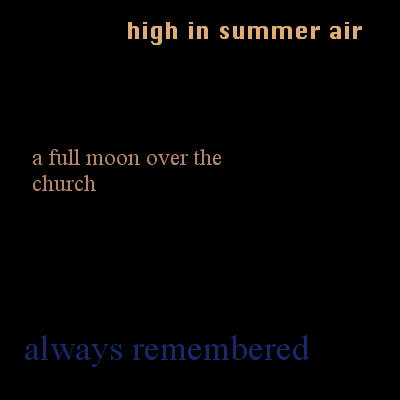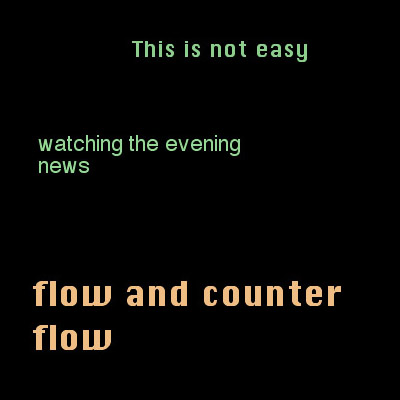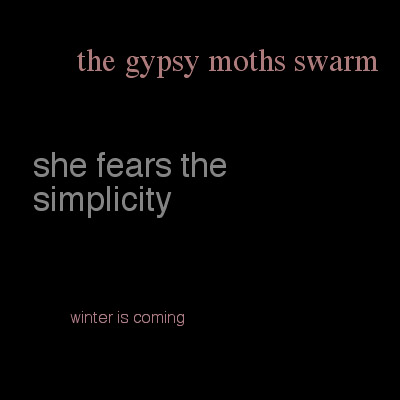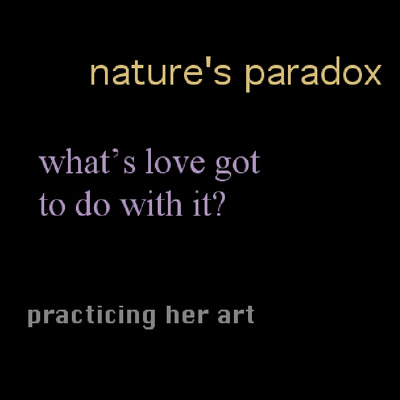
Art from Randomness
How Inverso Uses Chance
to Create Haiku
Matthew J. Koehler &
Punyashloke Mishra
Michigan State University
Abstract
This
article introduces Inverso, a computer program that creates haiku by randomly
combining pre-existing lines of poetry and presenting them in different fonts
and layouts (again randomly selected from a range of possible fonts and layouts).
Inverso's ability to write successful haiku raises several important issues
regarding the role of randomness in creative works and problematizes the question
of "authorship."
1. Introduction: Authorship
and Intentionality
It is accepted
in literary circles to talk of the death of the author and the deconstruction
of meaning. As argued by Barthes (1968/1977), in the postmodern world, understanding
the author's intentions in creating a text is not only impossible, but also
irrelevant in our interpretation of that text. However, when we read a work
of poetry these theoretical ideas seem to remain in the realm of theory, for
unwittingly or otherwise, every line we read leads us to a number of questions.
Consider this haiku:
Order
from chaos
Big Bang, a day of creation
Spring is coming
(Inverso,
2002)
What does this poem mean? What were the author's intentions and motivations? Why do certain combinations of words have such a powerful effect on readers? Clearly we are led to interpret this as a haiku, a form of Japanese verse, usually written in three lines of five, seven, and five syllables, that provides readers with insight, usually through a sharp visual image. This haiku seems to have been written by a contemporary author, playing with ideas borrowed from science and philosophy as he or she uses metaphor to describe spring as a tumultuous explosion of creation, a process through which order comes, paradoxically, from chaos. You might even want to ask the author what motivated this comparison. Was it a particular spring storm?
In truth, these are unanswerable questions. This poem was written by a computer program, named Inverso, that "writes" poetry2 by randomly combining pieces of text. Unlike the proverbial monkeys, who, after thousands of years of randomly hitting typewriter keys, are yet to produce a Shakespearean sonnet, Inverso produces a haiku that the authors feel is coherent and thematically unified, doing so in approximately one in ten tries (or once a minute). The following six haiku, collected from a random sampling of forty haiku generated by Inverso, further demonstrate the types of haiku that Inverso "creates."
| 2 Inverso & poetry |
| One could question whether the sequence of words Inverso generates should even be called poetry. In that case one would be justified in putting scare quotes not just around the word "write" but around the word "poetry" as well. |
![]() Inverso (~170 KB).
Inverso (~170 KB).
Require Shockwave plugin.






Figure 1. Six haiku, collected from a random sampling of forty haiku generated by Inverso. Inverso uses a range of layouts, animations and font and color choices as it creates the poems. Clearly these animations are not available in the print version. You can see them by going to the actual software. However given the random nature of haiku generation by Inverso, the chances of encountering the same haikus with the same colors and layouts are slim.
What does it mean when a
few lines of computer programming can generate meaningful texts? What role,
if any, does randomness play in art? Where does meaning reside? Who is the author
of these poems? The computer program? The person who wrote the program? The
person who generated the phrases? The reader who reads the haiku and inscribes
them with meaning? Considerations of locating poetic meaning, either in the
author or the reader, are not new. (See Hofstadter, 1998, for one perspective.)
However, we believe that software such as Inverso brings questions such as these
to a head. In the discussion that follows, we discuss our stance on some of
these matters.
2. The Power of Random
Processes to Create Art
Over the past century there has been a greater appreciation of the idea that
randomness and uncertainty underlie many phenomena. Encouraged in part by the
steady erosion of determinism in science, artists have come to embrace the random
and the chaotic. In the early 20th century, Dada artists advocated chance techniques
in the visual arts. A good example is Marcel Duchamp's random string painting,
entitled Network Stoppages, which was created by dropping a set of strings from
a height of one meter and tracing their outlines. Similarly the father of modern
collage, Kurt Schwitters, created his artworks by dropping pieces of colored
paper and other materials on a canvas (Hughes, 1991).
Artists of German Expressionism, a movement that existed in the first two decades of the past century, obsessed over chaos - both in the creative urge as well as in the art produced. The Expressionists believed that art always emerged out of chaos and seemed to become chaos. Similar tendencies in using accident as a compositional principle can be seen in the Abstract Expressionism that developed in America in the 50's and 60's, epitomized by artists such as Jackson Pollock. Using a large brush while moving rhythmically and spontaneously over a large canvas, Pollock developed a painting technique that celebrates accident and random processes.
Others have gone even further in this "fanatical desire to let nature take its course in the production" (Beardsley 1976, p. 194). Georges Mathieu used boxing gloves, dancing feet and even the tires of a moving Volkswagen to apply paint to his canvas. Yves Kline has produced "draggings." His chosen artistic instrument was a nude model, smeared with pigment, who was pulled across heavy paper. It seems that even common trash serves as a medium for the expression of random art. An exhibition in 1963, entitled "The Junk Object," consisted of a careful presentation of objects (a battered root beer dispenser, rusted mufflers, smashed headlights and so forth) picked up from garbage dumps (Gablik, 1985).
The use of chaotic elements
can be seen in 20th century avant-garde music as well. Karlheinz Stockhausen
created musical scores consisting of fragments, arranged at random on the page,
which the performer plays in any order that happens to strike his or her fancy
and continues to do so until one of the fragments has been played three times.
American composer Morton Feldman, influenced by the Abstract Expressionists,
prescribed no definite notes at all, while Earle Brown used tables of random
numbers to decide pitches. John Cage favored Chinese dice, or transparent pages
that could be juggled to get new compositions; at other times, he let the notes
be determined by the imperfections of the paper on which he happened to be writing.
He praised "indeterminacy," and he claimed to conduct musical "experiments"
that he defined as "simply an action the outcome of which is not foreseen"
(Beardsley 1976, p. 196).
In the area of literature the OULIPO (Ouvroir de Literature Potentialle, or
Workshop of Potential Literature) movement with its emphasis on chance and constraints
led to many interesting experiments. The father of the OULIPO movement, Raymond
Queneau wrote 100,000,000,000,000 Poems, a flip-book sonnet that embodied the
potential of creating unique sonnets by randomly opening a book to any of its
pages. Italo Calvino's suggestion for using a deck of Tarot cards in the reading
of The Castle of Crossed Destinies and the multiple readings of Hopscotch
encouraged by Julio Cortazar all continue this trend. Closest to our experiments
are Marcel Benabou's aphorism-making apparatus (Hofstadter, 1998; Matthews,
1998) in which new aphorisms were constructed by replacing words in existing
phrases with new words randomly selected from a predetermined lexicon.
3. The Limitations of
Randomness
Pure chance, however, does not always lead to aesthetically pleasing art.
Not every artist who splashes paint creates masterpieces like Pollock. It is
said that montage artists coming after Schwitters often tried to imitate his
random style, yet they never quite managed to capture his balanced, aesthetic
designs. So clearly randomness is not enough. Perhaps what is needed is the
trained eye - something that probably Schwitters and Pollock had more of than
their imitators - an eye that could select among random designs. The use of
randomness and selection changes our perspective of the artist and creator.
As Douglas Crimp says in his book On the Museum's Ruins (1993, p. 71),
"the artist invents nothing …. He or she only uses, manipulates, displaces,
reformulates, repositions what history has provided."
4. The Construction of
Inverso
The rise of the digital computer compels us to consider more carefully this
emphasis on the creative aspects of randomness. Our work on Inverso (though
we did not have a name for it then) grew out of our interest in hypertext. The
haiku, with its three line, 5-7-5 syllable structure, and its evocative and
ambiguous meanings, seemed particularly amenable to our application.
4.1 Inverso: The First
Steps
Inverso began as a personal project inspired by informal conversations between
the two authors. Sharing, as we did, an interest in poetry, hypermedia, and
technology, we saw an opportunity to explore and play with some of these ideas
through Inverso. We began by having the computer create haiku by randomly combining
lines from existing haiku. Thus, we felt, Inverso would not be subject to the
limitations of pure randomness, because lines of existing haiku already contained
some elements of successful poetry. In contrast, there have been other automatic
haiku generators that attempt to construct haiku from scratch, i.e., from individual
words that get selected at random. As can be imagined, these haiku generators
are not very good. There have been other haiku generators that categorize words
into groups (adjectives, nouns and so on) and select from them at random . These
words are then put together into haiku on the basis of complex grammatical and
syntactical rules. Although these haiku are somewhat interesting, the vast majority
of haiku produced with such software would not be regarded as being coherent
and aesthetically pleasing texts.
![]() See http://www.everypoet.com/
for an example.
See http://www.everypoet.com/
for an example.
Inverso, on the other hand, works on the level of phrases. The first draft of what would become Inverso began when we collected haiku from the web and put them into a database from which our software could select phrases and construct new haiku. We did our work in Macromedia Director because we were familiar with it. We began to face certain problems right away. We noted that, even at the level of phrases, pure random processes were not sufficient to produce art. The haiku lacked the elegance of the original haiku; they were fragmented and incoherent and did not present any arresting visual images. This is similar to the problems faced by imitators of Schwitters and Pollock whose designs lacked artistic value. It seemed to us that there is an art or craft to the choosing of the elements that go into a design -- be it a painting or a haiku.
As we worked on the first versions of Inverso, we realized that using lines from pre-existing haiku did not necessarily work. Lines written by other authors, it appeared, worked best only in a very limited set of circumstances (like those present in the poem in which it was used). At this point we discarded the pre-existing phrases from other sources and began writing our own. We wrote lines that had a more general purpose or we wrote open-ended lines (e.g., "action-reaction" or "my Buddha nature"). It was somewhere around this time that the software really began surprising us with the kind of haiku that were being generated. More often than before, we would see a poem in which the three lines appeared to be thematically integrated; often images and ideas were juxtaposed to create impressionistic sparks of meaning. We could recognize individual lines, but often the combination of lines did something more; it sometimes became a coherent poem. Some phrases we felt would never work, but every once in a while a wonderful haiku would appear with the phrase embedded in it. We began to tweak the phrases so that they fit better with other phrases (e.g., "a silent lucidity" became "silent lucidity, then"). We also began to get better at developing phrases and began to spend disproportionate amounts of time doing that - during meetings, lunch hours, lying in bed.
Thus as we worked with the program we realized that we had begun to develop a better understanding of what phrases worked and what did not. The process of developing software made us more sensitive to the nature of language that would "fit" the new medium we were developing. Just as the potter "listens" to the clay, we learned to listen to the evolving software - an idea akin to the notion of "backchat" that Schon uses to describe how the designer becomes sensitive to the evolving design (Schon, 1986). Thus began a transactional process where our sensitivities to the medium influenced the design of the medium and vice versa. In some sense, we were becoming authors of these poems; yet, at another level, the final shape of the poem was not in our control.
4.2 Layout and Other
Issues
It became increasingly clear that the meaning of the haiku lay not just in the
words, but also in the manner in which these words appeared on the screen. Many
poets consider the visual layout of poetry on the page while writing their poems;
we, too, began to pay greater attention to this. Initially all our haiku had
a single layout, with a single set of colors and typefaces. It seemed to us
that the same set of words could have different shades of meaning: (a) if they
appeared at different times and locations on screen; (b) if they moved to new
locations and layouts; (c) if they were represented by different colors and
typefaces.
Once again the limitations of randomness popped up. As we began to work on these ideas we realized that completely randomizing the layouts or font sizes or colors would often lead to choices that were unreadable or would not fit on screen. We solved this problem by limiting our sets of options. The software currently has three layouts and a range of choices for fonts and colors that are randomly selected whenever a haiku is generated. The fact that we wanted to make this software shareable and web accessible limited our choice of fonts to those that we believed would be available on most user platforms.
We also discussed whether we would have a system for saving the haiku generated, especially the ones we liked. Finally we decided not to. There was something wonderfully ephemeral about these haiku that would dissolve in, float into screen, stay for a few seconds, and then disappear. We often wondered about the haiku that we never saw . . . and in some sense that became an integral part of the software. It seemed to make the haiku a living organic being in its own right.
5. Public Response
We presented Inverso at various poetry readings that are conducted at the
college. Responses ranged from "just what is this anyway" to "hmmm
. . . interesting." What we did find was that people would stand by the
screen or projection; the dissolves and animations seemingly hypnotizing them.
One good haiku would be greeted by laughter or gasps. We also found that different
people liked different haiku although there were some that almost everybody
liked. Interpretations varied. We had discussions about who wrote the haiku.
If these were published, who would get credit as author? What difference would
it make if people were not told that the computer generated these haiku? Would
they become richer in meaning or poorer? If meaning resides strictly in the
mind of the reader, how could we determine quality, if we could determine it
at all? Is quality completely subjective? These conversations led to one final
change in the authorship of Inverso. Initially the authorship of Inverso was
credited to "lady luck, Matt Koehler & Punyashloke Mishra." To
this we added "you, dear reader" since it seemed clear that a large
part of the meaning of the haiku was created/assigned by the reader.
6. What's in a Name?
At the beginning we did not have a name for our software. As it began to take
shape we tossed a few ideas around and initially settled on kavi@emptor, which
was clearly another way of saying caveat emptor (buyer beware). This play on
words seemed appropriate since at some level the fact that there was no intentionality
behind the computer's choices should make the reader beware of reading too much
into the haiku. The "@" sign was just an indicator of the technical
nature of the project and finally the word "kavi" is Hindi for Poet.3
| 3 Use of a Hindi word |
| The use of a Hindi word was particularly significant for the second author, Mishra, since it is a language he is fluent in. |
With time, however, we felt that this title did not work. It was too techie, too simplistic at one level, and too complicated at another. One day as we struggled with alternative names we browsed over to the translation software that abounds on the web. We were looking for words in other languages that would mean something like "in verse," and it was then that we discovered that "verso" in Spanish was "verse." Inverso meant "inverse"; it was somewhat like our turning inside out the traditional forms of authorship. In Italian "verso" meant "towards," which in some sense indicated that we were developing a static thing, but our work was continually evolving. "Verso" also relates to conversation, which is something that this software was - a conversation between the authors and the medium, between the haiku constructed and the kinds of meanings generated.
7. Future Directions
We see Inverso as being a work in progress, a work about the power and limitations
of random processes in writing simple poetry. We intend to work on allowing
people to add phrases, allowing readers to select and print out selected poems,
and adding ways to remove the phrases that do not work. We are also intrigued
by the idea of making Inverso "smarter," so that it could learn which
phrases work and which ones do not. In a sense, we would like Inverso to take
on the early roles that we did in removing and changing phrases that simply
do not work. Conversely, it would also be interesting to see if Inverso could
learn to use very successful phrases more often, or learn combinations of phrases
that work well together.
It would be intriguing to make the software "learn" these roles based on users' ratings of the quality of the final haiku. So, for instance, if, every time the phrase "two plus two is four" is used in a haiku, readers rate that haiku poorly, Inverso could learn not to use that line very often, or perhaps delete it altogether. Similarly, Inverso might learn that the phase "action-reaction," when used with "learning and loving," results in pleasing haiku and may tend to use the two phrases together more often. Perhaps these ratings can be used to learn unexplored connections. So, for example, knowing that "action-reaction" and "learning and loving" work well together, and that "learning and loving" and "the sun and the moon" work well together, might encourage Inverso to try "action-reaction" and "the sun and the moon" in a poem.
Finally, we are curious as to other possible applications of our constrained randomness to other literary genres. Would these principles work for sonnets, limericks, or short stories? We wonder.
8. References
Barthes, R. (1968/1977). "The Death of the Author." In Image, music,
text. Translated by Stephen Heath. New York: Noonday Press.
Beardsley, M. (1976). "Order and Disorder in Art." In P. G. Kuntz (Ed.), The Concept of Order. Seattle: University of Washington Press. p. 191-218.
Crimp, D. (1993). On the Museum's Ruins. Cambridge, MA: MIT Press.
Gablik, S. (1985). Has Modernism Failed? New York: W.W. Norton.
Hughes, R. (1991). The Shock of the New. New York: Knopf.
Hofstadter, D. R. (1998). Le Ton Beau de Marot: In Praise of the Music of Language. New York: Basic Books.
Matthews, H., and Brotchie, A. (1998). Oulipo Compendium. New York: Atlas Press.
Schon, D. (1996). "Reflective Conversation with Materials." In T. Winograd, J. Bennett, L. De Young, B. Hartfield, (Eds.), Bringing Design to Software. New York: Addison-Wesley Publishing Company. p. 171-184.
********** End of Document **********
| IMEJ multimedia team member assigned to this paper | Yue-Ling Wong |